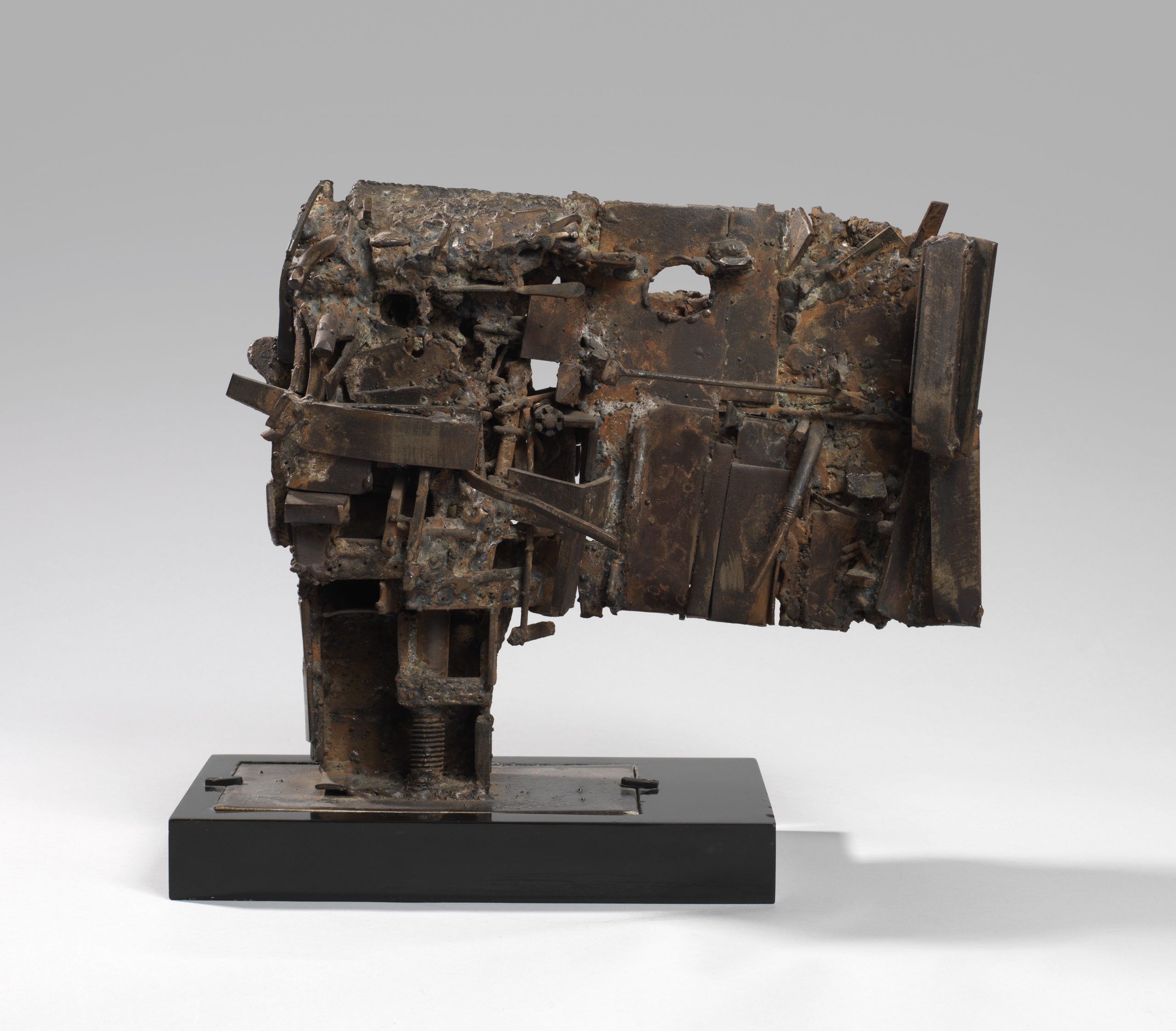The sculpture was made 60 years ago by the French artist César, who welded together over 100 pieces of junk metal. It is on loan from The Courtauld, and is the second object from there to be displayed in the museum as part of the McQueens Illuminating Objects series.
The original date for installation was 26 March, the same week the COVID-19 lockdown began in the UK. The Science Museum had already closed to visitors, and we knew it would be quite some time before it could reopen. So today’s delayed installation feels particularly special.

My work as the McQueens Illuminating Objects Intern began in November 2019. Each intern selects an object from the Courtauld’s collection for display, and I already had César’s sculpture in my sights.
Habitation had been the first object I mentioned in my interview for the post, when asked what kind of item I might like to explore. And, though I saw many beautiful and fascinating objects in the days I spent looking through the Courtauld’s treasure trove, no other artwork captured my imagination like this surprising and mysterious welded panoply of steel.
Once I’d chosen my object, the content development stage began. I had not counted on just how many people are involved in the creation of an exhibition. I met with the acquisitions teams at both institutions to draft the official loan letter; the web design team, social media team, and image copyright team at the Courtauld to create the online content; and the installation team and visual design teams at the Science Museum to decide on what the final display would look like.
And that was all for a single object from a single institution!
Next came the research. This for me was the most exciting part of my internship. Much of the research was done either in the Dana Research Centre and Library at the Science Museum, Imperial College Engineering library, or the archives at the Courtauld Institute – where I found some fascinating catalogues from César’s early exhibitions.
My favourite part of this research process was the chances I had to meet with experts. The first of these was Ben Russell, curator of mechanical engineering at the Science Museum. His passion for all things iron was infectious, and he really helped to bring the mysteries of this ubiquitous substance vividly to life.
I also met with Dr Shaun Crofton of Imperial College, London. Dr Crofton is a welding expert and explained this particularly technical skill to me with great humour, wit and an astonishing breadth of knowledge. My project is heavily indebted to both these brilliant minds.
After my meetings with the experts, my internship was focused on weaving the stories they’d told me, and those that the archives had revealed, into a engaging label and webpage.
After this process, the placing of this heavy and ungainly sculpture into its case in the Science Museum seemed the easiest part of the puzzle.
I have been unable to see Habitation for many months, with the closure of the Science Museum and Courtauld Gallery Archives due to COVID-19. After spending so much time looking at photos, it was a special moment to be able to stand back and admire the real thing.
I hope that museum visitors are as surprised by it as I was when I first saw it.
And I hope those visitors find, as I did, that Habitation rewards those who lean in, walk round, stand back to observe it. Those who take the time to look closely will find great depths of stories to untangle.
Habitation is on display on the second floor of the Science Museum, between Mathematics: The Winton Gallery and the Information Age gallery. It is part of the McQueens Illuminating Objects partnership, while The Courtauld is temporarily closed for a major refurbishment programme.
More information on Habitation and César can be found at https://sites.courtauld.ac.uk/illuminating-objects/habitation.
The Science Museum will be closed from Thursday 5 November until Thursday 3 December. Booking is now open for admission from 3 – 16 December 2020. Head to our website to read the latest information and to pre-book your free tickets.
